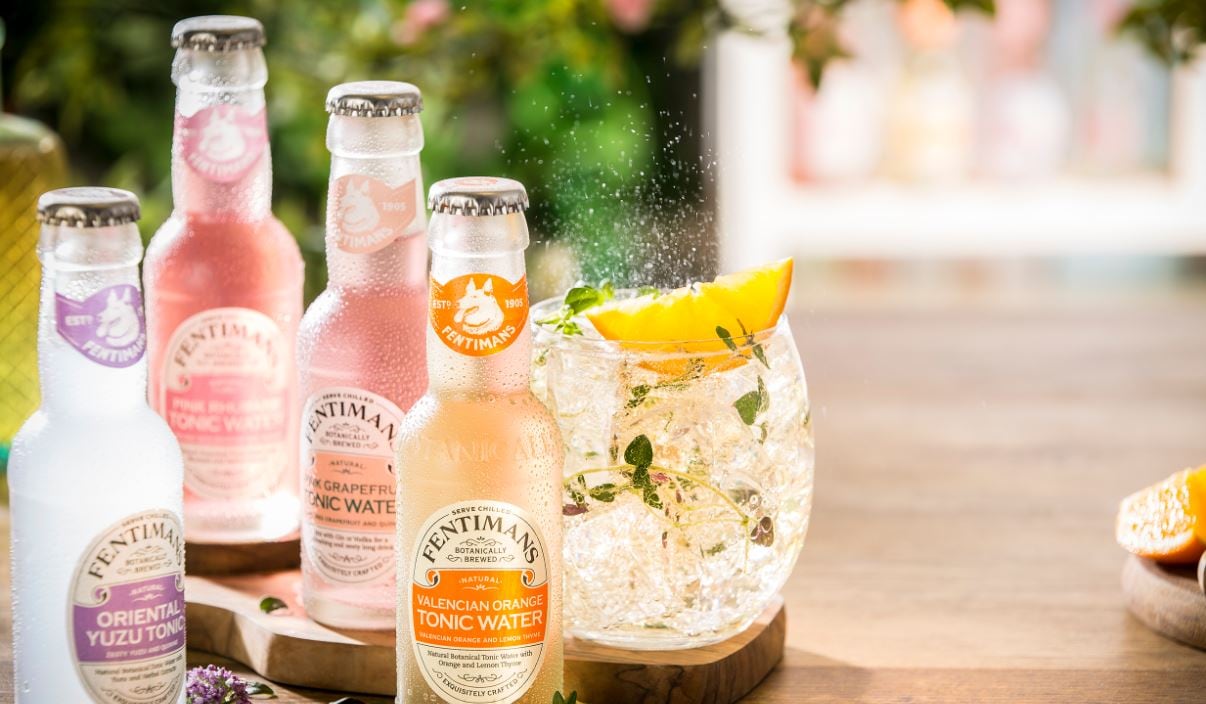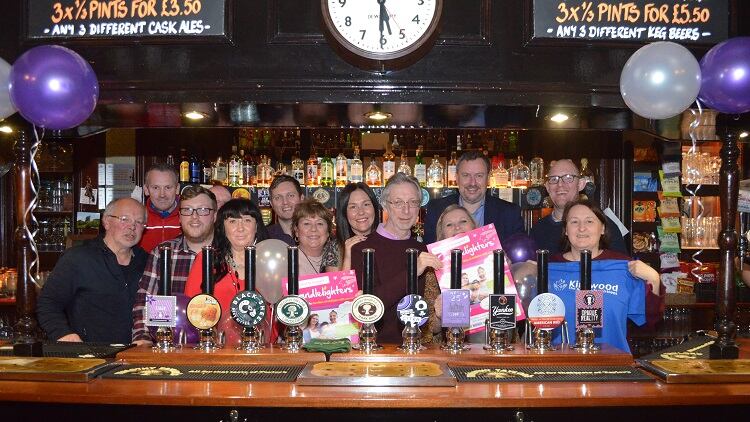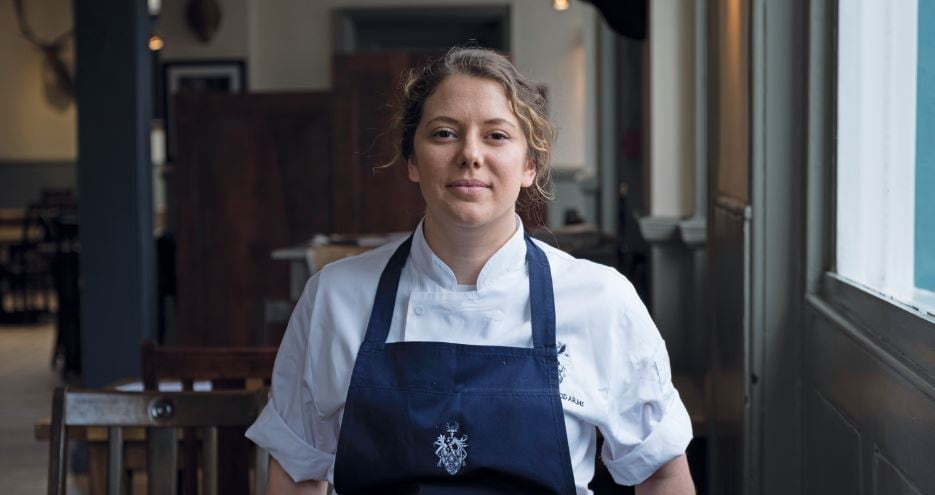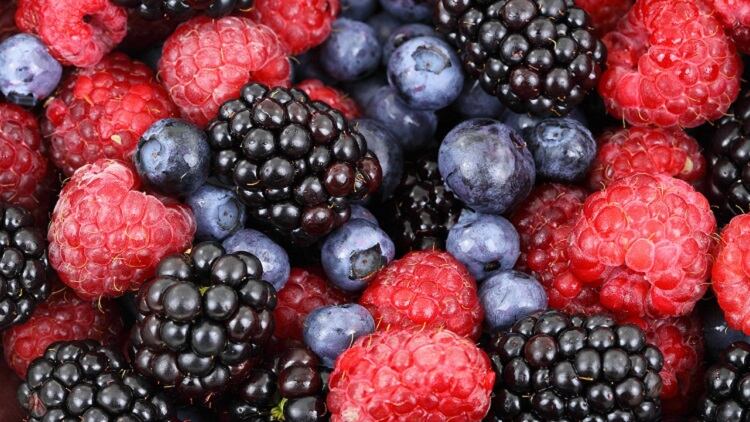It is no secret that the gin market is booming and this has had a knock-on effect on consumers’ curiosity about tonic water flavours.
Drinks suppliers share their thoughts on where the category stands, explaining that consumers’ interest in tonic water products as stand-alone drinks is growing, but at a slow pace. Operators are better placed to incorporate tonic products into mocktails for non-drinkers and those seeking low-ABV serves.
There has been a natural progression of consumer knowledge on tonic waters thanks to the gin boom, according to Mark Busby, founder of the Alan Sugar-backed Buzbee’s Beverages low-sugar company.
“Subsequently, the knowledge and understanding of tonic water and its variety of flavours has also naturally grown among people,” he says.
However, Busby believes demand for tonic water products to be sold on their own is going to grow further.
“Many people are beginning to become very familiar with which tonic goes with which flavour of gin but, overall, the awareness that these flavoured tonics taste just as great on their own, or as an alternative soft drink option, is still limited,” he explains.
“Therefore, the inclination to drink tonic products on their own is much less likely than tonic-incorporated mocktails.”
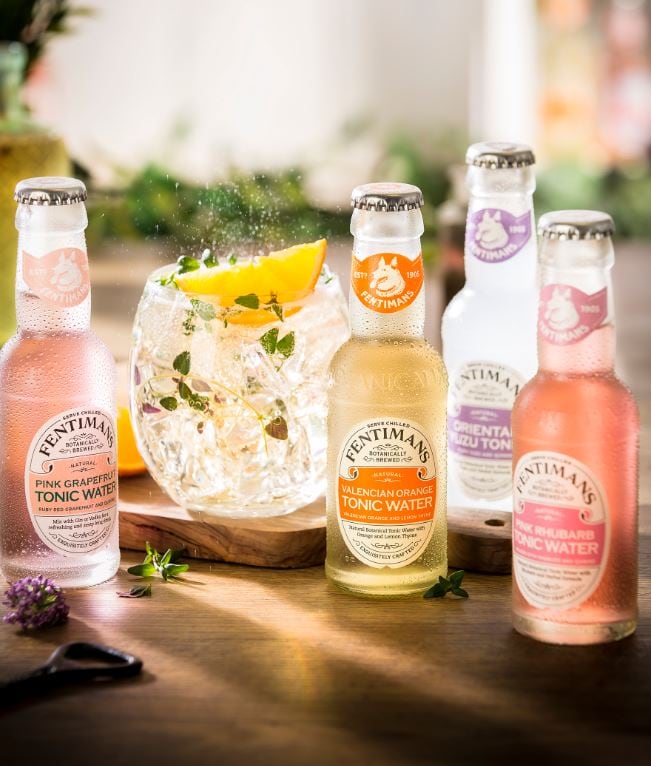
In response to what is a gradual shift in perception, tonic water suppliers developing new products have been considering versatility as a crucial quality.
Non-alcoholic cocktails incorporating tonics are rising in popularity, as are their use in low-ABV spritz style drinks. Whether it is for use with alcohol or not, the flavours loved by punters are the same, say suppliers.
Flavour profiles
Popular flavours include floral notes and citrus flavours, particularly grapefruit and also the likes of orange.
Rhubarb is also a firm favourite in infusions and as a singular product, having proven popular in gin mixes.
For example, Franklin & Sons offer a version infused with Hibiscus flower, while Fentimans, among its vast offering, has a pink rhubarb flavour, in addition to many other variants of the flavour on the market.
Ginger, rose and berries are also in demand, and suppliers are experimenting with different combinations of popular flavours as consumers’ desire for choice grows.
“Looking to the future, the indication is that consumers will increasingly seek more interesting flavours that will evoke a mood,” predicts Andrew Jackson, marketing director at Fentimans.
The provenance of flavours and emotive descriptors give people a sense of escapism – as shown in the company’s Valencian Orange tonic.
He tips the Japanese citrus fruit, yuzu, as a flavour that will make its way into the mainstream in the next few years at least.
“In addition, colour is increasingly becoming a key preference driver, with consumers seeking a visual experience alongside amazing flavour,” Jackson adds.
The tonic water market is likely to shift as drinking behaviours do. “People will become more aware of different flavour profiles that go together and, therefore, hopefully a general appreciation and accumulation of knowledge will mean that tonics will become a much more natural consideration when desiring a soft drink,” says Busby.
Over the next few years, customers may become more adventurous and move away from gin into other spirits, particularly rum and vodka, alongside low-ABV options.
“There are signs that flavours will be developed to pair specifically with wines and fortified wines, as the trend for ‘spritz’ style drinks continues to gain momentum,” says Jackson.
“The popularity of the ‘spritz’ is being driven by a number of factors; but crucially health linked to a lower-ABV serve, coupled with great flavour, make this a winning combination.
“With a little more attention to detail, the tonic water market will ideally maintain its current pace then speed up,” says Busby.
Premium ranges
Across the drinks market, premium options are growing in popularity especially among younger pubgoers.
“Premium has become the new norm, and increasingly brands will offer tailored premium offerings that appeal to connoisseur consumers,” says Jackson, predicting the future will see a new ‘super-premium’ tonic category.
Generation Z is four times more likely to spend £15 on a single cocktail, according to Franklin & Sons research. The brand also found that 46% of under 35s would be likely to order a non-alcoholic cocktail on a night out.
“One way for operators to capitalise on this is by elevating the presentation and experience of serving soft drinks,” says Rachel Phillips, out-of-home commercial director at Britvic.
“From mocktails to simple packaged drinks, investing in both glassware and garnishes will help to premiumise the serve and command higher price points,” she says.
Jackson concludes: “Demand for tonic to be consumed on its own is growing and that trend is set to continue. As brands extend their range of flavoured tonics, consumers are turning to this style of drink to act as a credible alternative to alcohol.”

